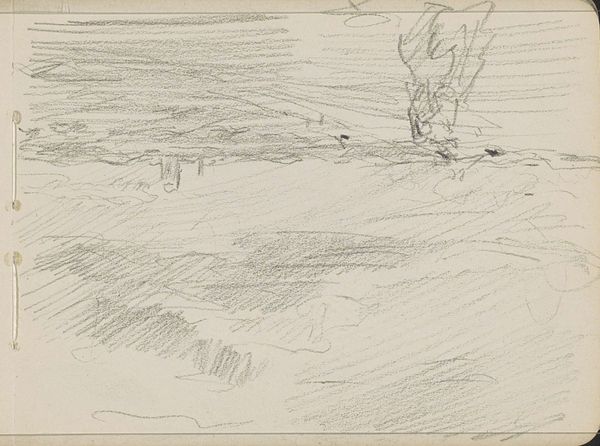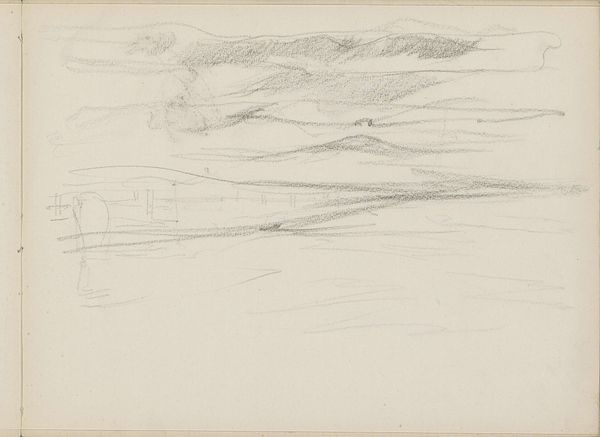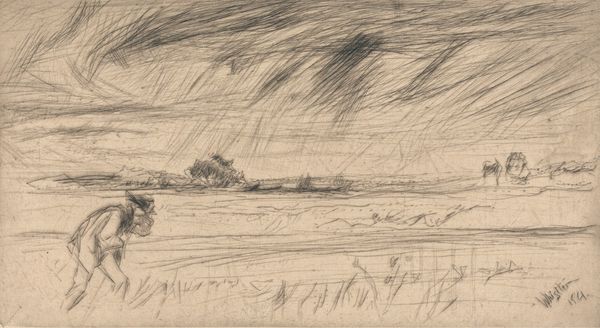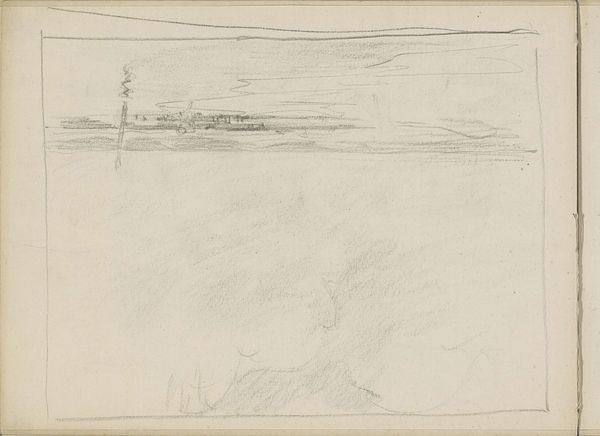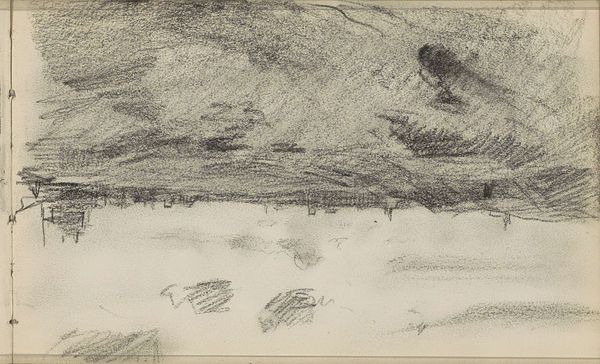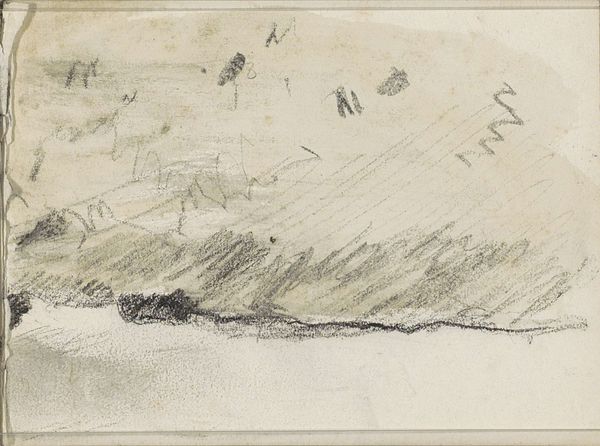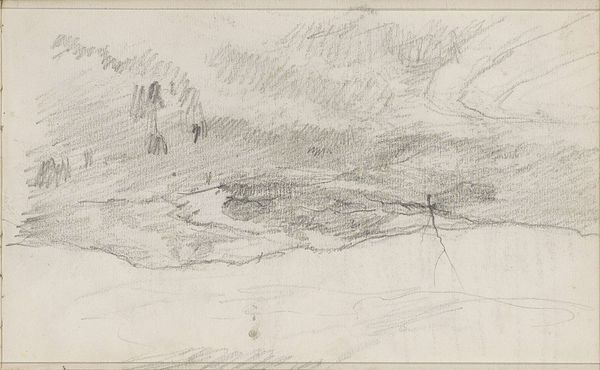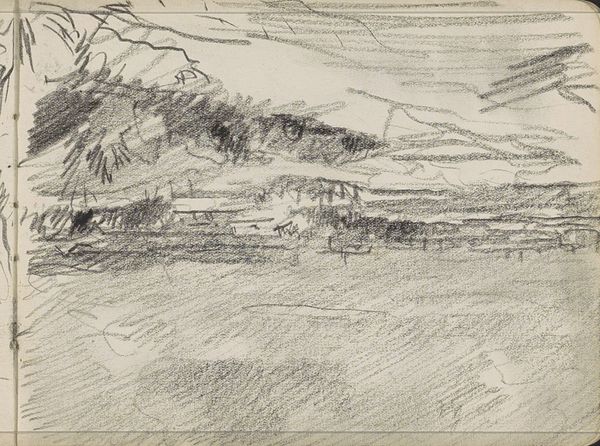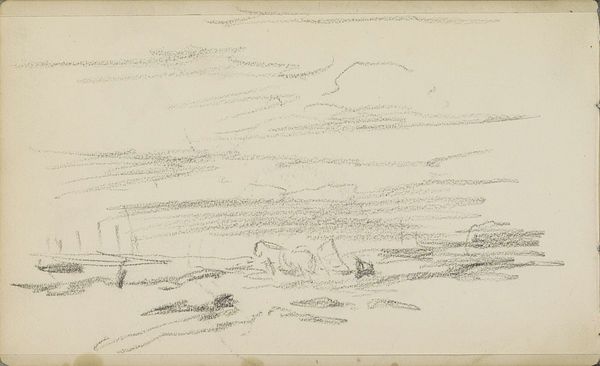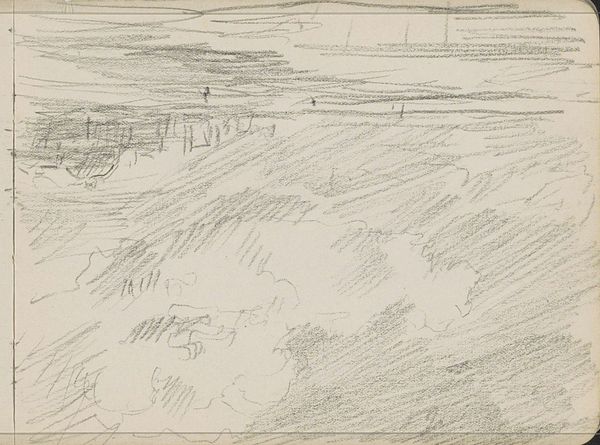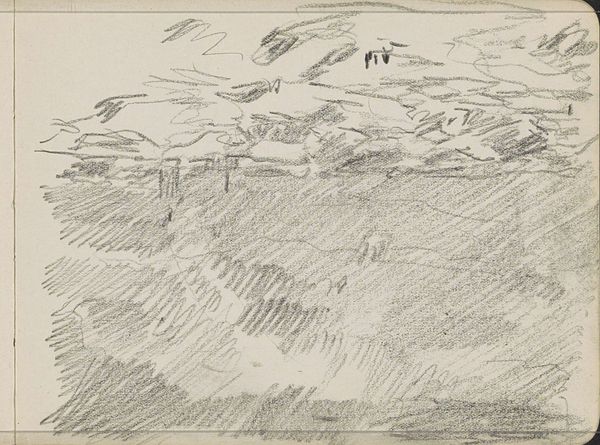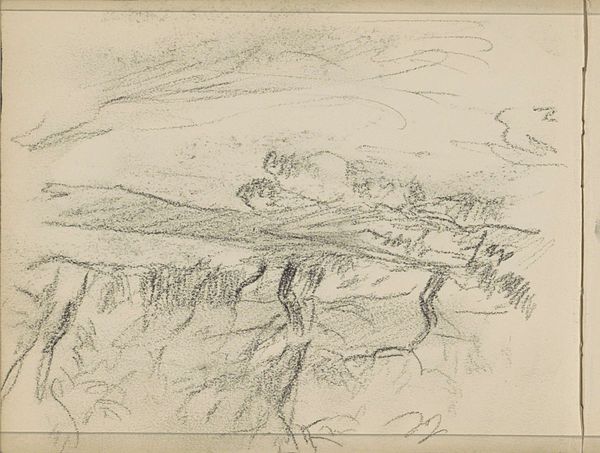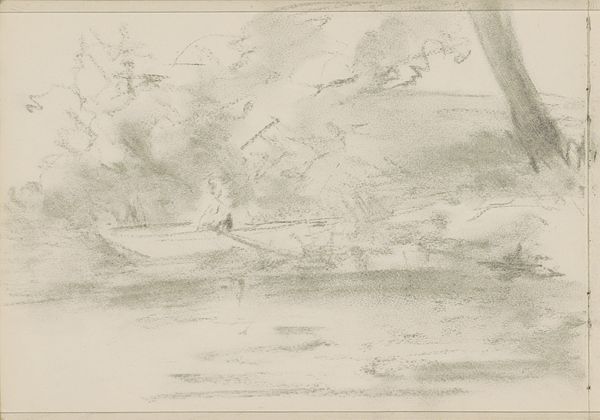
drawing, paper, pencil
#
drawing
#
impressionism
#
landscape
#
paper
#
pencil
Copyright: Rijks Museum: Open Domain
Editor: Here we have "Landschap," or "Landscape," a pencil drawing on paper by Anton Mauve, dated around 1886 to 1888. It's a quick sketch, almost dreamlike, and the composition is quite simple, with the sky taking up a large portion of the frame. What do you see when you look at this work? Curator: The compelling feature of this piece is Mauve's handling of line. Note how he uses a variety of marks, from soft, almost atmospheric smudges to more defined, energetic strokes, particularly in the upper register denoting the sky. This differential application guides the eye through the composition, creating depth and a sense of movement despite the static nature of the medium. Editor: I noticed the contrast between the sky and the bottom section, it is very minimalist, could that be deliberate? Curator: Precisely. Observe how the horizon line is not merely a divider but a threshold. Above, Mauve articulates form through complex interwoven strokes suggesting a turbulent, perhaps transient, sky. Below, he utilizes sparser, horizontal lines, evoking a sense of stillness, of the ground's relative immutability. How do these two modes of representation speak to each other in your understanding? Editor: That makes me wonder about the material properties of the drawing itself, I mean it is “just” pencil on paper, nothing more. Curator: Indeed, the piece exists as a testament to the expressiveness of fundamentally simple materials. Pencil offers Mauve an immediate connection to the scene; its capacity for subtle gradations, achieved through varying pressure and density of line, allows him to capture atmospheric effects and light gradations. This economy of means contributes significantly to the artwork's overall impact. Editor: I’m beginning to see how much the apparent simplicity actually enhances the piece! Thank you! Curator: The interaction of line and form creates the piece's success and reveals new formal possibilities each time we view it.
Comments
No comments
Be the first to comment and join the conversation on the ultimate creative platform.
